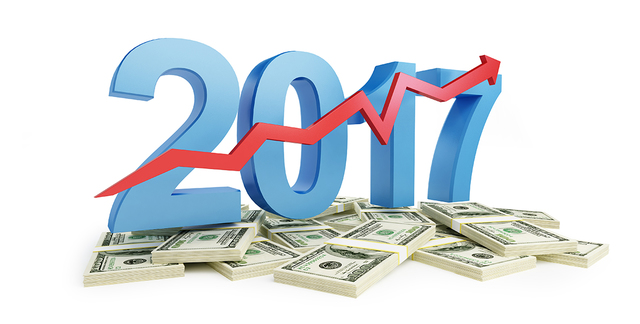
The Nevada economy is poised for a breakthrough in 2017 after showing it has emerged from the depths of the Great Recession, according to a Wells Fargo senior economist.
Mark Vitner said Wells Fargo projects the Nevada economy will grow at a 2.8 percent clip in terms of GDP, eclipsing the 2.5 percent growth estimated for 2016 and 2.3 percent projected for the nation. The Nevada economy grew at a 5.2 percent rate in the third quarter, the third best in the nation behind North Dakota and Utah and its tech industry, Vitner said.
“I think the key point is after years of trying to diversify the economy and get the ball rolling, it seems to be rolling right now,” Vitner said. “Nevada seems to be firing on all cylinders. The tourism sector is strengthened. The ski season has gotten off strong. Hockey is coming (with an expansion NHL franchise starting in the fall). Hopefully, football is coming (with a proposed Oakland Raiders relocation to Las Vegas), which will really help reinforce the expansion we have seen in the entertainment business away from the gaming industry. But the gaming industry is doing better, too, with revenue perking up.”
The “sluggish recovery” in tourism and gaming and “agonizingly slow recovery” from the housing bust forced Nevada to seek new avenues of growth, Vitner said. He cited the Tesla lithium-ion battery factory opening in 2016 and employing 1,100 with plans to add 5,400 jobs by the end of 2018, not counting thousands of construction workers building out the plant. Nevada also has added data centers, customer service centers and distribution facilities in recent years, he said.
Vitner said Nevada’s recovery gained momentum and is poised for stronger gains in 2017 because of the growth in tourism and construction. Nonfarm employment rose 2.9 percent in 2016, and because of that, more job seekers have moved to the state and bolstered the population by 56,000 people.
“Last year was the strongest year of domestic migration to Nevada since before the downturn, an encouraging signal for Nevada’s housing market outlook in 2017,” Vitner said.
While total employment is slightly above its level of 2007, Nevada is now more driven by education and health and professional and business services, which tend to provide more higher-paying, full-time positions than construction and tourism, Vitner said. Leisure and hospitality, however, remains the largest employer, accounting for one in every four jobs added over the past year, he said.
Retirees, meanwhile, were a major driver of Nevada’s population growth in the first half of this decade. The 65-year-and-older age group accounted for 30 percent of Nevada’s population growth from 2010 to 2015, and those between the ages of 50 and 64 accounted for another 27 percent, but he added it’s more competitive among states to lure retirees.
The resurgence in population growth has helped eat away at the oversupply of homes in Nevada, Vitner said. Sales of existing homes rose solidly this past year in Southern Nevada, with sales of single-family homes rising 1.3 percent and sales of condominiums rising 12.4 percent, he said.
Nevada’s homes have recovered about 65 percent of the value lost in the housing crisis, Vitner said. Nevada’s delinquency rate now stands only 0.6 percentage points above the national average, which is “immensely improved” from 2014, when Nevada’s rate was twice that of the nation, he said.
While migration to the state has helped home sales and new construction, which is trending higher, Vitner said single-family homebuilding remains well below its historic norms because it has taken time for foreclosed properties to work through the market.
Bank-owned properties accounted for only 11 percent of home sales through October 2016, and foreclosure activity has been slowed, with less than 2 percent of Nevada’s mortgages in foreclosure at the end of the third quarter of 2016, Vitner said.
“Nevada had a long recovery from the housing bust because many folks were so upside down,” Vitner said. “There wasn’t a lot of mobility in the market because people didn’t have any equity to be able to sell their homes, and the gaming business had hit hard times because of all of the competition around the country and around the world, particularly for the high rollers.”
Vitner said President Donald Trump could be good for the Nevada economy if he carries through with his pledge to bolster infrastructure and defense spending. Cutting taxes and regulations should also bolster the state’s economy, he said.
“The rollback in regulations should allow for the housing recovery to gain more momentum,” Vitner said. “These changes aren’t going to happen all at once and all that soon, and any boost to the economy won’t be in 2017 but 2018 or 2019.”






